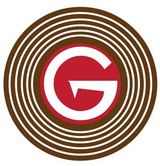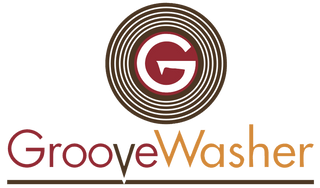Frequently Asked Questions
Why GrooveWasher?
Short answer: For better sound and longer record and stylus life.
Longer answer: When you put the “needle” or stylus on a rotating record to play it, the stylus rides along the extremely narrow, V shaped, spiral groove that is pressed or cut into the surface of the record. The recorded sound is encoded in the groove as a series of very delicate ridges, waves and bumps. The stylus tracks the groove and transmits the vibrations to the phono cartridge. The phono cartridge converts the vibrations to an electric signal and sends the signal to the pre-amplifier and on to the power amplifier. The power amplifier transmits the signal to the loud speakers, which re-creates the artist’s music as air vibrations that your ears can detect. And that you appreciate!
If the record groove contains dust or dirt or mold, you hear the dirt as pops, clicks and noise instead of the music. Playing a record while dirty wears your expensive stylus. As the stylus tracks the dirty groove it can grind out the delicate ridges in the groove and destroy the original, high fidelity sound of what was once a valuable record.
Yes. To avoid getting the GrooveWasher cleaning pad heavily soiled, you can rinse off the heavy dirt with tap water (taking care not to wet the record label.) Then place the record on the yellow microfiber towel that comes with the Standard and Display Block GrooveWasher kits. Follow the Off Turntable Cleaning directions in the Instruction Booklet.
The science of cleaning hard surfaces is well established. Chemists select the optimum ingredients and concentrations for specific surfaces and cleaning methods. You can choose to use toothpaste to wash your dishes or wood glue to clean your bath tub. Or toilet cleaner to wash your hands. Or alcohol to clean your floors. Why not use the cleaning solutions that are designed for their intended surfaces? Specifically to answer your question, why would you choose to use products that are intended for another use on the delicate surfaces of your delicate and valuable vinyl records?
The GrooveWasher Team designed High Tech G2 Fluid to safely and effectively clean vinyl records. G2 Fluid has a super low surface tension which allows the fluid to penetrate to the bottom of the microgroove. Our testers and customers tell us G2 Fluid is the best record cleaning fluid they have ever used. And G2 Fluid is affordable. It costs less, per cleaned record, than most of the alternatives. (More on G2 Fluid below.)
The GrooveWasher System has two parts that work together to clean vinyl records effectively, quickly and at low cost. Like cleaning any other hard surface effectively, GrooveWasher uses the “spray and wipe” method. The proof of this method is the improvement in the sound reproduction of the record, before and after cleaning with the GrooveWasher. Other methods will make the record "cleaner" but not truly clean.
There are hundreds of methods and products you can choose to clean your records. After all, they are your records, your investment. Today, many audiophiles choose GrooveWasher as the fast, effective and convenient tool to clean and care for their record collection.
Some GrooveWasher users also use a vacuum or ultrasound record cleaning machine (RCM) or spin their records in a bathing device. The RCM or bathtub is a good tool when you want to clean 10 to 100 records at a time. The GrooveWasher is a "single record" cleaning tool. It's convenient when you want to just clean or a few records. Even a machine cleaned record will have some micro dust contamination from room air. For machine cleaned records, the GrooveWasher is the smart tool to use immediately before playback.
The GrooveWasher walnut handle was inspired by the original D series record cleaning systems of 1972 to 1982. The GrooveWasher handle has a shape and size that fits well in your hand. It does not have the oval routed hole of the vintage system. Instead the GrooveWasher handle is shaped to hold a replaceable cleaning pad. The original system did not offer this feature.
“One drawback of listening to music with a physical medium is that you must take care of it.”
Alex Chase, Recording Engineer
G2 Cleaning Fluid FAQs
G2 Fluid was inspired by the D series fluids of 1972 to 1982. Four of the five ingredients of G2 Fluid are from the same or similar chemical families that were used to make the D2, D3 and D4 fluids. But G2 Fluid uses current state of the art surfactants and super wetting agents that were not available in the 1970s. Every ingredient in G2 Fluid has been researched and tested for non-reaction to PVC vinyl, the primary ingredient in vinyl records. This means that G2 Fluid is perfectly safe to use on vinyl records. We have not tested G2 Fluid on 78 RPM shellac plastic records. In the future we may develop a special cleaning fluid for 78s.
G2 Fluid cleans vinyl records without the need for rinsing. Like the D series fluids, G2 Fluid leaves almost zero residue on the record’s surface when used according to the instructions. You can test this for yourself. Spray a little G2 Fluid in the palm of your hand or on your eyeglasses and wipe with a clean towel. There is no residue you can see or feel. Like the D series fluids, G2 has a tiny percentage of powerful active ingredients to volume. All of the ingredients evaporate quickly, leaving almost zero residue.
The carrier for G2 Fluid is purified deionized water. This is laboratory quality water with zero particulates. The electric ion capacity is extremely low, meaning this water will not transmit an electric charge. Therefore, G2 is anti-static on contact with the record's surface. G2 is also neutral pH, an important quality for a PVC vinyl cleaning solution.
If your vintage D series brush is clean and in good condition, the G2 Fluid is a good choice. We tested G2 Fluid with an unused original D brush from 1972 as well as D2, D3 and D4 fabric brushes in good condition. G2 cleaned records well with them all.
Our record cleaning solutions are designed to clean vinyl records (made from PVC vinyl with various formulations of plasticizers) without harm. We warrant that G2 and G3 and GSR are fully safe for use on vinyl records. They are not designed or tested for use with any other materials that have been used to make recordings.We do not recommend that you use our vinyl record cleaning solutions on 78s
Prior to the use of PVC vinyl, there were many different materials, including “shellac” that were used to make records. So you can’t assume that what you use to clean one 78 record will be safe on another 78 record. Some of these materials will delaminate if they are wetted with water or any other fluid
Cleaning Pad FAQs
One big innovation of the GrooveWasher cleaning pad is that it can be easily replaced or cleaned. The original D series record cleaners had a cleaning pad that was permanently glued to the walnut handle. The only way to replace the cleaning pad was to mail the handle to the factory. The GrooveWasher pads are attached to the walnut handle with velcro. They are easily removed and reinstalled to the handle.
The fabrics used on the D series brushes had directional fibers. This was a good choice for the time. Directional fibers pick up the dirt laden fluid from the record surface and the fabric and foam substrate absorbed it. Now, 30+ years later, a better choice is split fiber microfiber. This fabric was not commercially available in the 1970s.
The GrooveWasher cleaning pad fabrics are made from the highest quality, split fiber microfiber. Many times smaller than the original D series fibers, the tiny fibers on the GrooveWasher pad fabric pull and absorb the G2 solubilized dirt from the record surface and microgroove.
The GrooveWasher cleaning pads can also be used dry for a very light grooming just before playback.
The GrooveWasher Team continues to test other cleaning pad fabrics.
The GrooveWasher cleaning pad is attached to the walnut handle with industrial strength Velcro. Carefully pull the pad away from the handle by the pad base. Then dip the pad into a bowl of distilled water and squeeze the pad repeatedly. If you have soft tap water, you can rinse the pad under the faucet. If there is visible soil, spray the pad with G2 Fluid or apply a few drops of laundry detergent. Rinse and squeeze dry with the yellow microfiber towel. Let the pad air dry overnight. When the cleaning pad is worn out, order a replacement on our website.
Customer Service and Sales
Contact us with any questions, concerns, improvement suggestions, product or service feedback.
info@groovewasher.com
Or call 816.610.8800 during business hours:
9:00am - 4:00pm Central
We want to hear from you!

